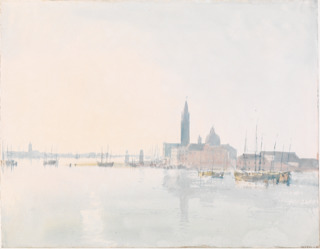On paper, Sharp Objects looks like a detective series, all that is more classic. A murder, a disappearance, an investigation, a journalist… This scheme has already made the glory of the greatest thrillers ever written. But it turns out that this is different. Because the story of Sharp Objects is not one of morbid affair. It is the story of violence so widespread that it becomes invisible, barely palpable. A violence that hides its name. Be careful, the truth could well skin you…
The series comes straight from the mind of Gillian Flynn, author of the famous novel Gone Girl, adapted for the screen by Fincher and widely acclaimed by critics. On the directing side, it is Jean-Marc Vallée who sticks to it, known for his films Dallas Buyers Club, Wild and his successful series Big Little Lies. In the cast, expect to be blown away by the brilliant Amy Adams as the main character (Doubt, Sunshine Cleaning, Once Upon a Time, First Contact, American Bluff…) who has just picked up his ticket for the Golden Globes. We will also applaud the scathing Patricia Clarckson (The Green Line, Six Feet Under, Pieces of April…) in the role of the mother and finally, the promising Eliza Scanlen as a deranged half-sister. Suffice to say that before even starting, we are already on a qualitative series.
A heroine more than tortured
Sharp Objects, which could be translated as "sharp objects" (if we refer blindly to Google's translation), lives up to its name. Both by its aestheticism and by the subjects it deals with: female violence.
The series offers us the time of a season the charming company of Camille Preaker, alcoholic and deeply tortured journalist. Yes, let's say it right away, it's not going to be all rosy, huh. Indeed, the young woman bears on her body the traces of a suffering that gnaws at her: she scarifies herself. So much so that there is almost no virgin space left on his skin. The titles of the different episodes refer to the words she carved into the flesh.
*atmosphere*
In short! The story begins when her editor puts her on a case that takes place in her hometown. He heard about a murder + disappearance combo of teenage girls. It smells like the serial killer, or at least the old pedophile but above all, it smells like the scoop. And since Camille knows the area, she will be able to take advantage of it to solve two or three personal problems. Nan because apparently, there is work.
The White Trash for scenery
Good. In view of what happens next, we say with hindsight that the boss has not AT ALL captured the magnitude of what he is asking his employee. Because in itself, he is not a bad bugger. He really believes that it will do him good to face his old demons. Except that Camille is much more of a skinned alive at this point. It is a gigantic walking open wound. And to ask her to take a look at Wind Gap, the hole of her childhood, is simply to throw her into the mouth of the wolf.
To put it in context, Wind Gap is the kind of fart city in the southern United States that smells of sweat and racism like Civil War. It should also be noted that the only black characters are servants employed by fried families. All. GOES. OK. But that's not the only thing from the last century. The local economy is based on local pig farming. When you are told that this city stinks, it's not just an image… Basically, with Wind Gap, we are more on a sticky and evil atmosphere than on a destination for your next vacation.
In addition here, everyone knows each other and gossip is numerous. Camille is precisely one of the few to have left the bled, which obviously deserves all the eyes. That and the fact that it smells like vodka all the time. And that she dresses in a sweater by 35 °. Suffice to say that rumors are rife.
A painful story
But the rumors, Camille swings. It will not prevent him from hitting big cooks throughout the series. No, the real suffering here is to come face to face with your memories. We learn very quickly that her little sister died of a strange disease when she was young. A sufficiently traumatic ordeal in itself. There is also his wealthy mother, unwelcoming and ready to send him pikes as soon as the opportunity arose. And then there is Amma, her half-sister whom she barely knows, and who obviously has all the characteristics of the little plague. We are therefore in a very conflictual climate, punctuated by the crises of the three characters, and which justifies more and more the malaise of Camille.
The episodes are also punctuated by flashbacks on his life, reanimated by elements of the investigation, by a word from his mother or by the meeting with an old acquaintance. These memories are very succinct, barely understanding for the viewer. He too will have to conduct the investigation if only to pick up the pieces of the journalist's past.The problem is that it gives a very slow pace to the beginning of the series. The public is troubled by so many questions, so many clues to finally have so few answers. A cadence that reminds a little Lost. Except that it is a mini-series, and we reassure you, the pace ends up fortunately accelerating.
Sharp Objects or the underside of female violence
Dark, almost mystical atmosphere, tortured characters, suspense, molested children, all in the sticky setting of old South America carried by a breathtaking soundtrack… Sharps Objects shares a lot in common with the talented True Detective series. Except that here, the subject is not human perversion, but violence against women. Systemic violence, as we will see through Camille's past cheerleader. Integrated violence, as shown by discussions among housewives in Wind Gap. Violence committed by men sometimes, but also and especially by women. Whether it is self-flagellation or it is committed on others. Whether physical or psychological. This aspect deserves to be emphasized because it is an approach that is rarely addressed in the end.
In today's media landscape, women are routinely referred to as harmless beings or victims. Sharp Objects does indeed point the finger (and with great accuracy) the suffering they endure but the series does not forget that it can also be the author. Gillian Flynn does not lock her protagonists into a Manichean role where everything is white or everything is black. She takes care to sharpen their personalities in all their complexity. After all, wouldn't we ourselves be victims and executioners?





















![Sum’One sort la pépite électro Let It Snow et le EP Hello Vera Sum'One - Let It Snow [Official Video]](https://www.justfocus.fr/wp-content/uploads/2024/11/SumOne.jpg)












